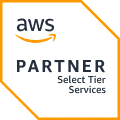
CloudTern offers highly scalable software solutions that enable organizations to securely drive innovation into business processes

Contacts
Services
Quick Links
© 2025 — CloudTern. All Rights Reserved.

CloudTern offers highly scalable software solutions that enable organizations to securely drive innovation into business processes

© 2025 — CloudTern. All Rights Reserved.